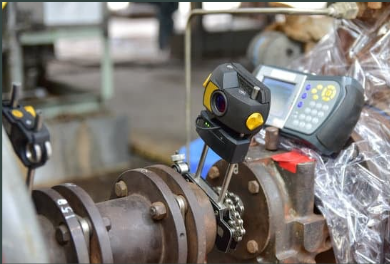Most Popular
-
Bulletproof Glass Industry Trends
Bulletproof Glass Industry Trends,s indicated by a market report distributed by Persistence Market R.. -
Areas of Revolution in Urban Mobility
It promises to be the most far-reaching advance in mobility since the invention of the automobile it.. -
Industrial IoT, The agent of change for Defense system
The Internet of Things (IoT) is today's business push to incorporate a wide assortment of specialize.. -
Imperatives of Big Data Analytics in Defence
Defence and Security related data being generated from numerous sources should be completely dissect.. -
IoT: Game - changer for Aviation Industry
Internet of Things(IoT) has taken its place everywhere now. It is in which the everyday objects/thin.. -
Airlines need to fund Pilot training
A move far from the compensation to-fly plan and back towards the model of bearers paying for prepar..
Have you ever wondered how airplanes achieve such incredible feats of engineering? It all boils down to meticulous attention to detail, and that includes ensuring every component is perfectly aligned. This is where laser shaft alignment comes in, playing a critical role in the aerospace industry.
What is Laser Shaft Alignment?
Imagine a tool that uses a laser beam to precisely align the centrelines of rotating shafts. That's exactly what laser shaft alignment is. This technology ensures critical components in aircraft, like engines, landing gear, and control surfaces, are perfectly in sync. Think of it as the invisible conductor bringing harmony to the complex symphony of an airplane.
Why is it Important in Aerospace?
The benefits of laser alignment in aerospace are numerous:
- Unmatched Accuracy: These systems achieve incredible precision, vital for optimal aircraft performance and safety. Even the slightest misalignment can have significant consequences.
- Smooth Operator: Misaligned shafts create excessive vibration. This translates to premature wear and tear on parts, increased noise, and an uncomfortable ride for passengers. Laser alignment keeps things running smoothly, literally.
- Fuel Efficiency Boost: Properly aligned shafts lead to more efficient engine operation, which means reduced fuel consumption and lower emissions. A win for the environment and airlines alike!
- Saving on Costs: By preventing unnecessary wear and tear, laser alignment helps minimize maintenance expenses. It's a preventative approach that keeps planes in top shape.
- Safety First: Perhaps the most crucial benefit - proper alignment is paramount for safe flight. Ensuring shafts are perfectly aligned reduces the risk of accidents, keeping everyone on board safe.
Applications Taking Flight
The applications of laser alignment in the aerospace industry are as diverse as the aircraft themselves. Here are just a few examples:
- Aligning wing flaps for optimal flight control.
- Precise positioning of helicopter tail booms.
- Ensuring engine mounts are perfectly aligned and positioned.
- Streamlining cargo door hinge alignment for seamless operation.
- Precise placement of skin panels on the aircraft body.
- Setting and aligning fixtures for accurate wing assembly.
- Measuring and profiling wing and rotor assemblies for optimal performance.
- Aligning helicopter tail rotor drive shafts for smooth operation.
- Ensuring perfect alignment of wing flap assemblies.
- Precise positioning of engine and gearbox mounts for optimal performance.
The Future of Laser Alignment System
The increasing demand for high precision and efficiency in manufacturing is driving the growth of the global laser alignment system market, which was valued at USD 2,654.65 million in 2019 and is expected to reach USD 4,115.14 million by 2027, growing at a CAGR of 7.05% from 2020 to 2027. This expansion is mostly being driven by the aerospace industry, along with other sectors including the automobile and healthcare industries. With all of its benefits, laser shaft alignment is going to be an important part of maintaining safe skies and optimal airplane performance.
